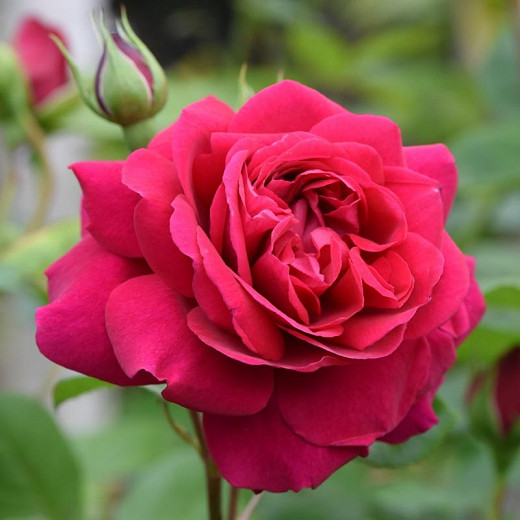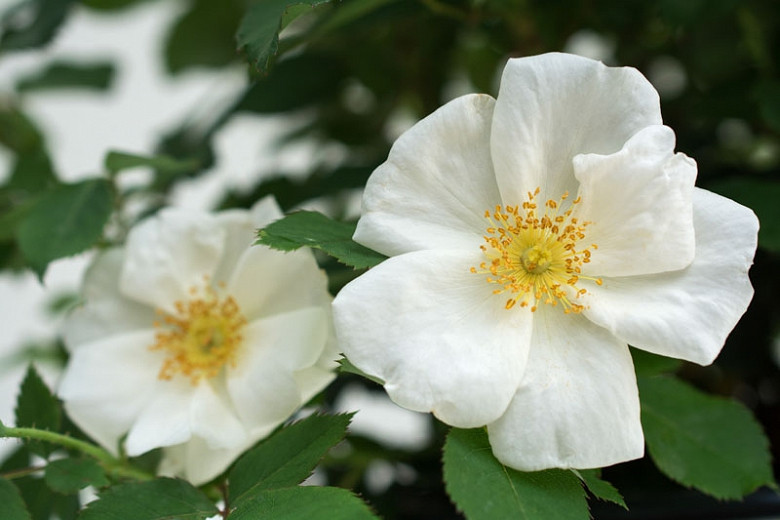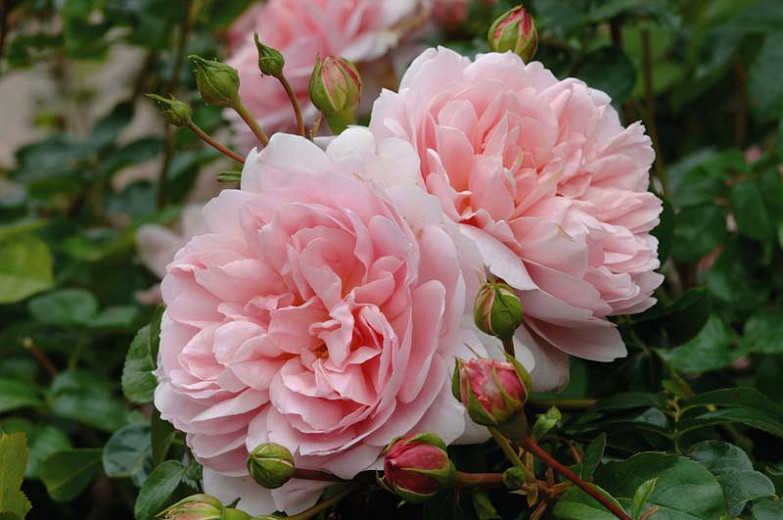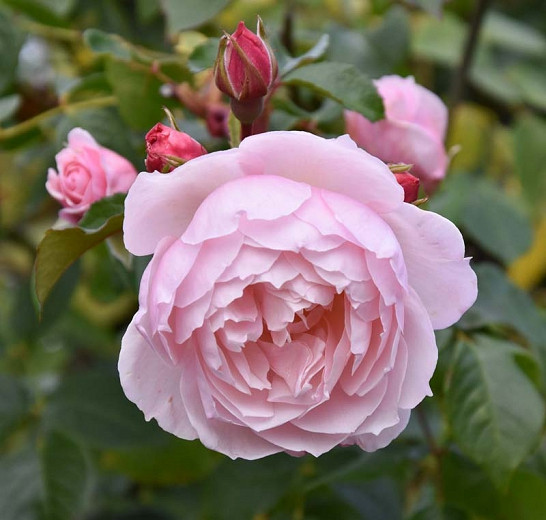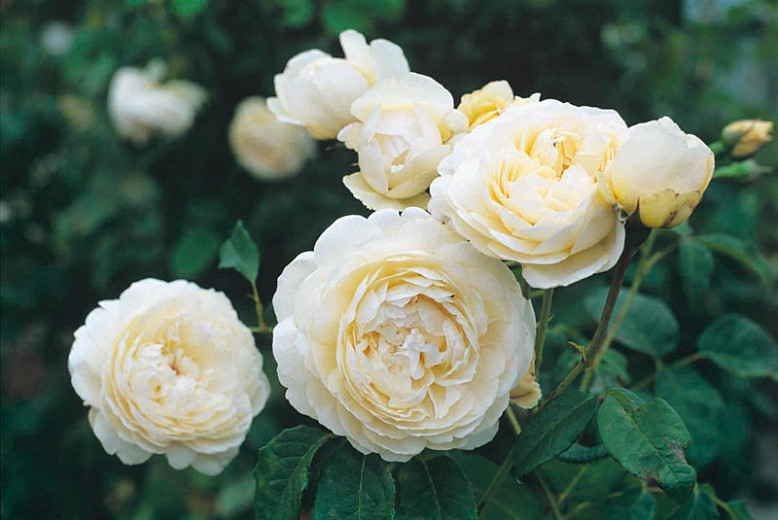Rosa californica (California Wild Rose)
Remarkably robust, Rosa californica (California Wild Rose) is a semi-deciduous shrub adorned with prickly branches clothed with bright green, pinnately divided leaves. It is covered with a plentiful array of fragrant, single, open-faced, flat pink flowers, 1-2 in. across (2-5 cm), with yellow central stamens. Blooming from late spring to late summer, the 5-petaled flowers range from pale pink to deep magenta. Borne singly or in clusters, they are followed by berry-like fruits that are as pretty as the flowers themselves. The bright red rose-hips, provide a beautiful contrast against the foliage which is evergreen in mild winter climates. If left on the shrub, they might persist into winter to the delight of hungry birds who will feast on the colorful hips during the winter months. California Wild Rose spreads by suckering roots, as far as space and moisture permit, to form broad thickets. It is often used as a spiny hedge in a garden where it can roam freely to form a large thicket. Adaptable, it can survive drought, but may go summer dormant if it does not get enough water.
- Grows up to 6-10 ft. tall and wide (180-300 cm).
- Best grown in full sun to part shade, in moist, well-drained soils. Tolerant of clay soils and drought. Note that best flowering and disease resistance generally occur in full sun. Water maximum 3 times per month in summer after the plant is established.
- Low maintenance if planted where it can spread freely. If used in a small garden, it may require regular pruning to keep the plant from spreading. It can be pruned as aggressively as desired in winter.
- Perfect for foundations, banks and slopes (erosion control), or flowering hedges.
- Attractive to pollinating insects, butterflies and birds
- Do not remove spent flowers if you want to enjoy a beautiful crop of orange-red hips in fall and winter.
- Propagate by seed or offsets. Rose seed often takes two years to germinate. Small offsets from the parent root transplant well.
- Native to California, Oregon and the northern part of Baja California.
Requirements
| Hardiness | 6 – 9 |
|---|---|
| Heat Zones | 6 – 9 |
| Climate Zones | 2, 2A, 2B, 5, 6, 7, 8, 9, 10, 14, 15, 16, 17, 18, 19, 20, 21, 22, 23, 24 |
| Plant Type | Roses, Shrubs |
| Plant Family | Rosa – Shrub Roses, Rosa – Roses |
| Exposure | Full Sun, Partial Sun |
| Season of Interest | Spring (Late)Summer (Early,Mid,Late)FallWinter |
| Height | 6' – 10' (180cm – 3m) |
| Spread | 6' – 10' (180cm – 3m) |
| Spacing | 72″ – 120″ (180cm – 300cm) |
| Water Needs | Low, Average |
| Maintenance | Low, Average |
| Soil Type | Clay, Loam, Sand |
| Soil pH | Acid, Alkaline, Neutral |
| Soil Drainage | Moist but Well-Drained, Well-Drained |
| Characteristics | Fragrant, Showy, Semi-Evergreen, Fruit & Berries |
| Native Plants | United States, California, Pacific Northwest, Oregon |
| Tolerance | Clay Soil, Drought |
| Attracts | Birds, Butterflies |
| Garden Uses | Banks and Slopes, Beds and Borders, Hedges and Screens |
| Garden Styles | Informal and Cottage, Mediterranean Garden |

